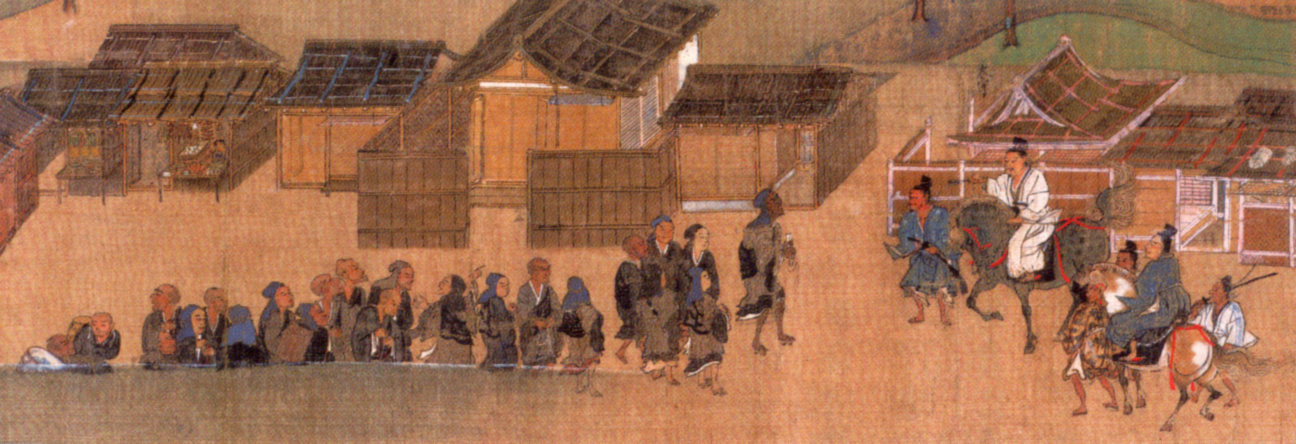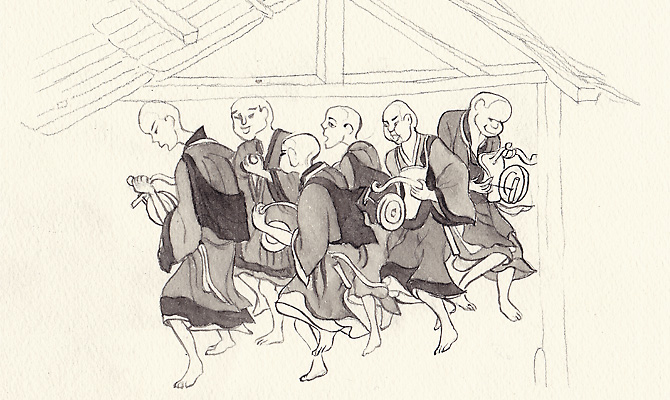Tokyo
An Example of Japanese Ukiyoe Prints
Once there was a very unique a Japanese ukiyo-e print artist called Sya-raku. He produced his works only in 10 months from 1794 to 1795 in the Edo era when the samurai shogun governed Japan.
His works were unique even to Japanese fans of ukiyo-e print art or pictures of everyday life in the Edo Period. At the time, the kabuki play was one of big entertainments for citizens of Edo, the political capital of Japan at the time, which is now Tokyo. Accordingly, ukiyo-e print artists depicted kabuki actors with enthusiasm. Their works were sold well like pictures of movie stars of today. Sya-raku also portrayed kabuki actors. However, he did not try to simply make those actors look good and cool, but he emphasized characters and personalities of actors even to a degree where they looked odd or ugly.
And, since Sya-raku soon disappeared after 10-month professional activities, his works were somewhat forgotten and neglected. Meanwhile, the samurai regime fell through a civil war, putting an end to national isolation of Japan. And, westernization of the Japanese society started in 1860s.
As Japan opened the nation, Japanese art works came to be widely introduced into Europe and the US. In this trend, ukiyo-e print art became very popular among artists and art fans in Europe. And, German collector Julius Kurth wrote a book about Sha-raku in 1910, in which he appraised Sharaku's portraits as high as those of Rembrandt and Velázquez.
Responding to high reputation of Sha-raku in Europe, Japanese turned anew their eyes to Sha-raku and discovered extraordinary artistic merit in his works. Today, Sha-raku is admitted to be one of the greatest artists in the samurai-ruled Edo Period when Japan was governed by the Tokugawa shogun between 1603 and 1868. And, the most popular print of Sha-raku's works was the one titled Third-Generation Otani Oniji Acting Guy Edo-be.

Third-Generation Otani Oniji Acting Guy Edo-be
https://www.adachi-hanga.com/ukiyo-e/items/sharaku027/
In a certain kabuki play, this guy called Edo-be is going to attack a subordinate samurai, called Ippei, to rob him of money. His determination to do evil is well depicted in his face and hands. This print, produced in early days of Sha-raku's activities, is regarded as the best of his 150 works.
The most controversial point in this work is the hands of Edo-be. Some critics say that Sya-raku failed to express the hands well in proportion. Others say that Sya-raku was not good at drawing human hands. Or, even a notable Japanese artist once said, "It is an unbelievable mistake. Sha-raku was a poor portrait artist, though his works are so impressive." However, in other works, Sya-raku depicted hands of kabuki players so well.
http://blogs.yahoo.co.jp/gonewiththe3/28800493.html
Sya-raku could draw hands of men well. But why did he present such deformed hands in Third-Generation Otani Oniji as Guy Edo-be? To know truth, we have to understand that this work was originally produced in a pair with First-Generation Ichikawa Omezo Acting Guy Ippei.

First-Generation Ichikawa Omezo Acting Guy Ippei
https://www.adachi-hanga.com/ukiyo-e/items/sharaku026/
While Edo-be is ready for attacking Ippei, Ippei is also preparing for a fight, drawing a sword. Facing the sword, Edo-be must feel extreme danger, trembling and shuddering. But his will to carry out an evil act is so determined. Under this mental conflict, Edo-be's hands start to shake nervously. This movement is what Sya-raku wanted to express. So, it looks rather natural when the prints are shown side by side.


The mystery is now solved. Sya-raku presented the strange formation of Edo-be's hands on purpose; it is not a mistake or a failure. It shows a dynamic and nervous motion of Edo-be's hands before Ippei's sword being drawn.
Today, some experts support this view. Even a psychologist named Iwao Akita has strongly argued this idea, even asserting that Edo-be is a self-portrait of Sya-raku himself (http://www.amazon.co.jp/%E5%86%99%E6%A5%BD%E3%81%AE%E6%B7%B1%E5%B1%A4-NHK%E3%83%96%E3%83%83%E3%82%AF%E3%82%B9-No-1213-%E7%A7%8B%E7%94%B0-%E5%B7%8C/dp/4140912138). They argue that these deformed hands make this work the most valuable one among Sya-raku's works. The hands so disproportionate and amateurish are a result of exerting genius by Sya-raku.
There are many things in this world that could be only fully understood in a pair with their other half. If there is a mystery in something, it may be well solved when viewing it in a pair with its other half.
For example, the Kingdom of God may be well understood when thinking about it in a pair with the hell or this real world contaminated by money and human desire.
In addition, there has been another mystery about identity of Sya-raku who disappeared from the ukiyu-e print market after only 10-month engagement. But it is now widely believed that Sya-raku was a samurai who served a certain samurai lord as an expert in Noh dramas. The Japanese dramatic art Noh is sometimes called No-gaku. And the same kanji letter meaning music, fun, or easiness applies to both raku of Sya-raku and gaku of No-gaku. Sya means copying.
This samurai was named Saito Jyuro-be. Sya-raku's full name was Tojyu-sai (or Tosyu-sai) Sya-raku. And, Saito Jyu of the samurai name can be simply transposed to Tojyu-sai that means a goodman of an east country.
Finally, I think it is also a mystery why in a work Tosyu-sai Sya-raku depicted a samurai holding a sword in an impossible manner. Spatial configuration of his right hand and fingers is strange. With the thumb and the index finger touching each other at their tips in such formation, you cannot hold a sword.

http://item.rakuten.co.jp/seibidou/10081317433500/
**** **** ****
Joh 8:28 Then said Jesus unto them, When ye have lifted up the Son of man, then shall ye know that I am he, and that I do nothing of myself; but as my Father hath taught me, I speak these things.










